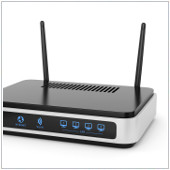 It’s astounding how celebrities manage to amass millions of followers and gain thousands of likes for posting a photo of their shadow. Companies of all sizes would go crazy for that kind of exposure, but rarely do their wishes get granted. But not all hope is lost, start small and take baby steps with the help of Instagram’s recently-announced tools that help make the process of establishing your company’s presence an easier one:
It’s astounding how celebrities manage to amass millions of followers and gain thousands of likes for posting a photo of their shadow. Companies of all sizes would go crazy for that kind of exposure, but rarely do their wishes get granted. But not all hope is lost, start small and take baby steps with the help of Instagram’s recently-announced tools that help make the process of establishing your company’s presence an easier one:
Business profile pages
Previously, it was hard for Instagram users to distinguish an account belonging to a business from one that is dedicated to cats, but with the Business Profile feature, that’s a problem of the past. By taking advantage of this, you are giving customers directions to your business with just one tap – and on top of that, you can also establish a contact call to action with choices that include: text message, phone call or email.
The posts themselves are identical to those from other accounts, but as previously mentioned, the major difference is the account’s profile page itself. Especially when customers are given directions and various channels for communication with just a single tap. This fills in the void many business owners experience: converting the interest sparked on Instagram and converting it into action.
For example, if you stumble upon something you like on the page of a clothing boutique, you’ll be able to initiate contact with a single tap to inquire or to make a purchase.
Insights
Inspired by Twitter and Facebook, Instagram will now offer analytical data that tracks how the content is performing. Business owners will get to see reach and impressions data along with demographics (ex. On location and age) for each post.
This data won’t be available on Instagram itself, to access it you’ll need a business Facebook page that is linked to the Instagram account. By analyzing user demographics and behavioral data, you’ll be able to create Instagram content geared towards users that are more likely to engage with it.
Promote, promote, promote
Both the Business Profile and Insight features are free, but companies with a generous advertising budget can utilize the Promote feature to enhance top-performing posts through paid advertisements. Instagram will also suggest which posts should be promoted, and you can use the data gathered from Insights to designate top-performing posts based on your target audience.
Plus with customizable targeting options, you are in control of how little or how much you want your content promoted. Promoted content also comes with a call-to-action embedded in the post, for example: triggering a phone call or redirecting traffic to your website.
Both Instagram and Snapchat are emerging as the most popular social media platforms to date, and before these features are released later this year, you should consider establishing an Instagram presence for your business as soon as possible. For any further questions, feel free to contact us. #wereheretohelp

 Much like unpredictable thunderstorms, internet problems relentlessly plague those wishing to get some work done or catch up on the latest movies. Instead of waiting for divine intervention, take it upon yourself to get rid of sluggish connections. Not only do these ten tips reduce frustration but they also help you speed up your Wi-Fi:
Much like unpredictable thunderstorms, internet problems relentlessly plague those wishing to get some work done or catch up on the latest movies. Instead of waiting for divine intervention, take it upon yourself to get rid of sluggish connections. Not only do these ten tips reduce frustration but they also help you speed up your Wi-Fi: Like the Loch Ness Monster, reputation marketing has long been considered a figure that is shrouded in mystery. Shai Aharony from Redboot Online sums it up as “tools that allow you to analyze, track, monitor and engage online activity, giving you the power to directly respond to customer complaints and turn potentially damaging feedback into a positive experience.” If you are still unsure, take a look at these 10 tools that provide a better theoretical as well as practical understanding:
Like the Loch Ness Monster, reputation marketing has long been considered a figure that is shrouded in mystery. Shai Aharony from Redboot Online sums it up as “tools that allow you to analyze, track, monitor and engage online activity, giving you the power to directly respond to customer complaints and turn potentially damaging feedback into a positive experience.” If you are still unsure, take a look at these 10 tools that provide a better theoretical as well as practical understanding:
 Gamers require an effective strategy to thwart the boss, athletes require constant updates on the latest tournaments to improve performance and businesses require an online community to fully thrive. As the saying goes: ‘What comes easy won’t last, and what lasts won’t come easy’. This is especially true when you embark on building an online community for your company. Allow the following five tips to help you make the process an easier and enjoyable one:
Gamers require an effective strategy to thwart the boss, athletes require constant updates on the latest tournaments to improve performance and businesses require an online community to fully thrive. As the saying goes: ‘What comes easy won’t last, and what lasts won’t come easy’. This is especially true when you embark on building an online community for your company. Allow the following five tips to help you make the process an easier and enjoyable one: One of the biggest fears security experts have may be coming true: self-replicating ransomware. Viruses that have the ability to copy and spread themselves to new systems are nothing new, but until now ransomware attacks have been targeted campaigns. The best way to protect your network from a security threat is to understand it, here’s everything you need to know about this latest development.
One of the biggest fears security experts have may be coming true: self-replicating ransomware. Viruses that have the ability to copy and spread themselves to new systems are nothing new, but until now ransomware attacks have been targeted campaigns. The best way to protect your network from a security threat is to understand it, here’s everything you need to know about this latest development. With the advent of cloud computing, more and more people are choosing Google Chromebook for their next laptop purchase. However, many business owners are still on the fence as to whether or not this new 21st century laptop will satisfy their needs. If this is you, here’s a quick guide to figure out if a Chromebook is a smart choice for your business.
With the advent of cloud computing, more and more people are choosing Google Chromebook for their next laptop purchase. However, many business owners are still on the fence as to whether or not this new 21st century laptop will satisfy their needs. If this is you, here’s a quick guide to figure out if a Chromebook is a smart choice for your business. The words “free publicity” bring joy to the ears of many SMB owners. You don’t have a big marketing budget, so you need to find ways to cut costs as much as possible. Luckily Facebook has you covered. There are several ways you can promote your business on the world’s biggest social network that won’t cost a dime. Here are a few to get you started.
The words “free publicity” bring joy to the ears of many SMB owners. You don’t have a big marketing budget, so you need to find ways to cut costs as much as possible. Luckily Facebook has you covered. There are several ways you can promote your business on the world’s biggest social network that won’t cost a dime. Here are a few to get you started.